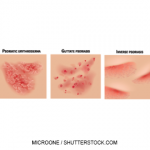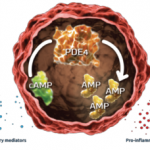NEW YORK (Reuters Health)—Apremilast is effective in patients with difficult to treat psoriasis of the scalp and nails, according to long-term results of two phase 3 trials.
Investigators had previously reported 16-week data from the Efficacy and Safety Trial Evaluating the Effects of Apremilast in Psoriasis (ESTEEM) 1 and 2 trials. The new report includes patients from ESTEEM 1 and 2 with up to 52 weeks of treatment.
About half of patients with plaque psoriasis have nail involvement, while up to 80% of patients have scalp involvement, Dr. Phoebe Rich of Oregon Dermatology and Research Center in Portland and colleagues note in the Journal of the American Academy of Dermatology, online Nov. 5.
“Involvement of these difficult-to-treat areas may have particularly detrimental effects on patient quality of life,” they write.
The U.S. Food and Drug Administration approved apremilast, an oral phosphodiesterase 4 inhibitor, in 2014 to treat adults with active psoriatic arthritis and patients with moderate to severe plaque psoriasis and the European Commission followed suit in 2015.
In ESTEEM 1 and 2, patients had been randomized to placebo or 30 mg of apremilast twice daily for 16 weeks. At 16 weeks, placebo patients were switched to apremilast through Week 32, after which a randomized withdrawal phase lasted up to Week 52.
At 16 weeks, between 41% and 47% of patients with moderate to very severe scalp psoriasis given apremilast had no or minimal scalp psoriasis, compared to about 17% of patients on placebo (P<0.0001). Among patients with nail psoriasis, the nail psoriasis score improved by 23% to 29% with treatment, while it changed by between +7% and -7% in patients on placebo.
Analyses for Weeks 16–32 and Weeks 32–52 found improvements were maintained over 52 weeks in patients who had shown a Psoriasis Area and Severity Index (PASI) response at Week 32. This improvement was observed whether or not a patient had initially started on placebo.
For example, at Week 32, ESTEEM 1 patients who had started on apremilast had a 43.6% improvement in Nail Psoriasis Severity Index (NAPSI) score, while improvement in the ESTEEM 2 trial was 60%. Those who had started on placebo showed a 24.6% and 47.6% improvement in NAPSI score in ESTEEM 1 and ESTEEM 2, respectively. By 52 weeks, results were similarly improved for the PASI responders, regardless of whether they began the study on placebo or active treatment.
Dr. Rich and her team conclude: “Our findings indicate that apremilast, a novel oral therapeutic option for patients with moderate to severe plaque psoriasis, is an effective option for patients with nail and/or scalp involvement.”


